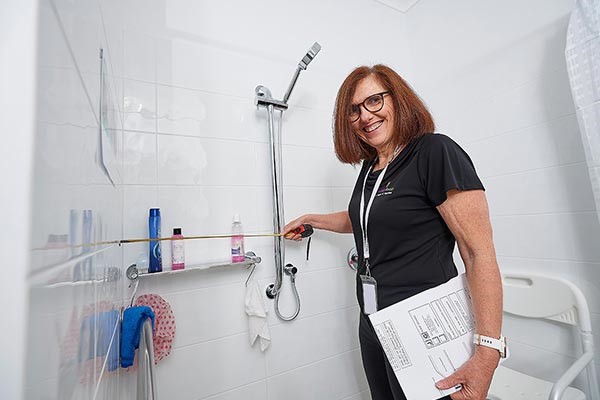HealthProviders DB is a comprehensive database of healthcare providers, including a complete directory of all Environmental Modification Occupational Therapists.
Occupational Therapist Healthcare Taxonomy Code 225XE0001X
As of today, the following are the total number of Environmental Modification Occupational Therapists nationally, in your State, and near your location.
Select a State below to view the list by State. Additionally, you can narrow the list by city, among other options, from the Filter Panel, which you can open by clicking the vertical ellipses ⋮ in the upper right corner of the app.
Alaska – Alabama – Armed Forces Pacific – Arkansas – American Samoa – Arizona – California – Colorado – Connecticut – District of Columbia – Delaware – Florida – Federated States of Micronesia – Georgia – Guam – Hawaii – Iowa – Idaho – Illinois – Indiana – Kansas – Kentucky – Louisiana – Massachusetts – Maryland – Maine – Marshall Islands – Michigan – Minnesota – Missouri – Northern Mariana Islands – Mississippi – Montana – North Carolina – North Dakota – Nebraska – New Hampshire – New Jersey – New Mexico – Nevada – New York – Ohio – Oklahoma – Oregon – Pennsylvania – Puerto Rico – Palau – Rhode Island – South Carolina – South Dakota – Tennessee – Texas – Utah – Virginia – Virgin Islands – Vermont – Washington – Wisconsin – West Virginia – Wyoming
Medicare
The following are the total number of Environmental Modification Occupational Therapists who accept Medicare in your State, the number who have opted out of Medicare, and the total number excluded from participation in Medicare nationwide.
The diagram below shows all the Environmental Modification Occupational Therapists across the country, represented by blue bubbles. The larger the bubble, the greater the concentration of providers in that area. Red bubbles represent Medicare-excluded providers, with the larger bubbles indicating a higher percentage of excluded providers in that region. You can change the bubble size to be based on exclusions from the Size menu.
What do Environmental Modification Occupational Therapists do?
Environmental modification occupational therapists (OTs) assess a client’s home and create a plan to modify the environment to improve safety, independence, and quality of life.
They identify barriers to daily living and recommend specific adaptations, ranging from simple changes like installing grab bars and ramps to more complex projects involving architects and builders, such as widening doorways or adding lifts.
OTs also provide training on the use of new equipment and assistive technology, helping clients and their families adapt to the changes.
What they do
Assessments: They evaluate the client’s home to identify safety hazards and accessibility issues by observing the environment and the client’s function.
Recommendations: Based on the assessment, they recommend modifications to the home’s physical structure and layout to suit the individual’s needs, such as adding ramps, grab bars, or a stairlift.
Collaboration: They work with clients, families, architects, and contractors to ensure the modifications are suitable and effective.
Implementation: They can help manage the implementation process, from creating concept drawings and plans to monitoring the installation of modifications.
Training: They provide instruction on safely using adaptive equipment and technology, including smart home devices and safety pendants.
Follow-up: They review the completed work to ensure the modifications have addressed the client’s needs and goals, and may provide additional fall-prevention strategies.
Examples of modifications
Accessibility: Ramps, lifts, widening doorways, and levered door handles.
Safety: Grab bars, shower benches, and anti-slip flooring.
Technology: Medication reminders, smart home devices (e.g., Google Home, Amazon Echo), and medical alert systems.
Lighting: Specialized home lighting to improve visibility.
Bathrooms: Ramps, grab bars, raised toilets, and roll-in showers.

